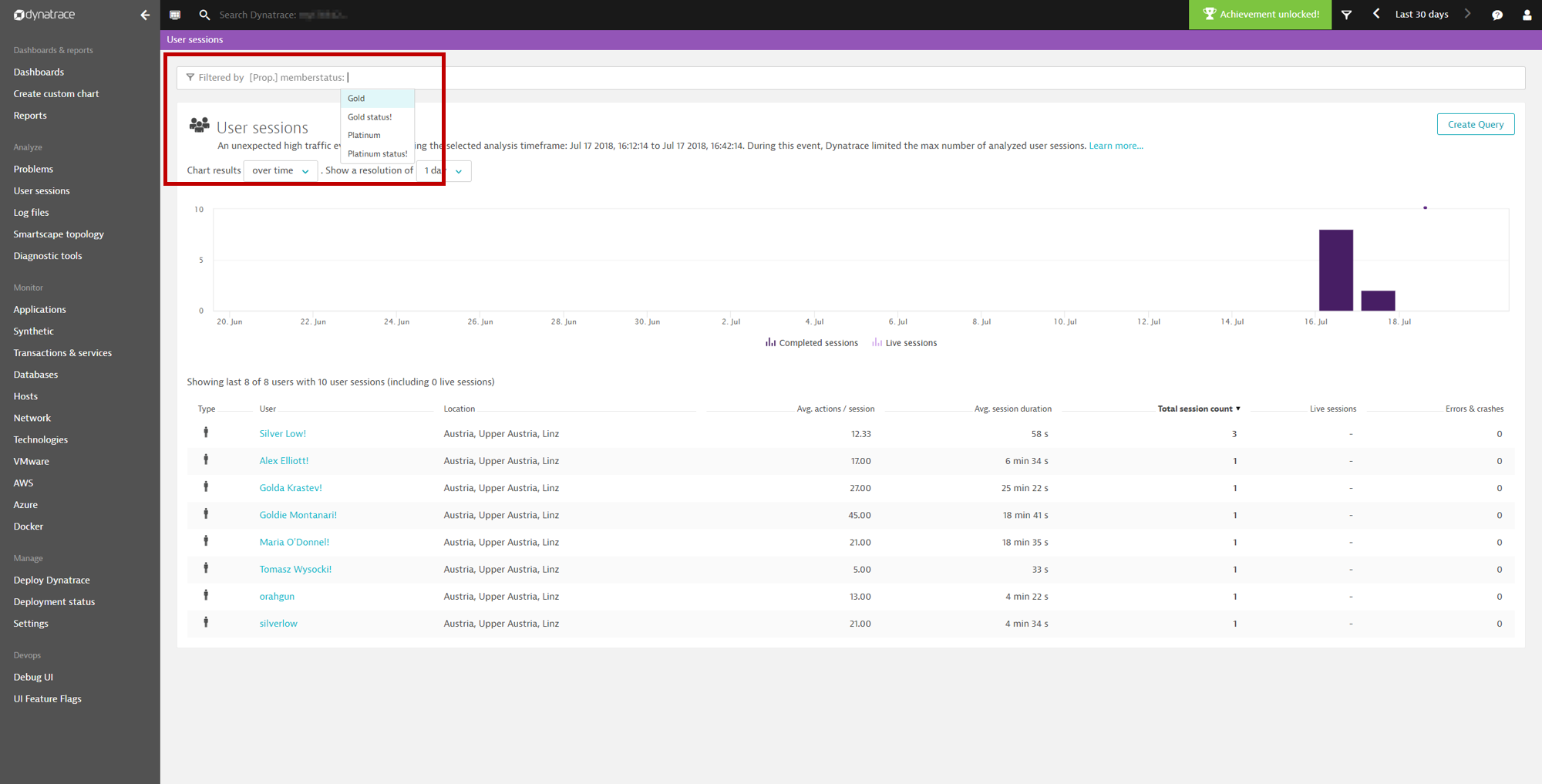
The ability to segment user sessions into meaningful categories is key to understanding how your end users experience your web application. For example, you may want to drill into the experience of your top-tier customers in one specific region or conduct a proactive outreach campaign to customers who had issues with one of your digital touchpoints.
Many Dynatrace customers are already tagging their monitored user sessions for the purpose of user complaint resolution. Now, we’ve extended this capability with support for multi-tagging, which enables you to automatically tag each monitored user session with sets of custom metadata (for example, loyalty status, department name, travel destination, or other).
Focus on what matters most by segmenting based on business information
You can now configure multiple custom string, numeric, and date properties for your monitored user sessions. Property values are then captured as part of each of your users’ journeys. This enables a whole new set of use cases. This blog post explores three such use cases. For more information on the newly enabled use cases, including how to set up session properties and leverage our API-first approach, please see the Early access program announcement blog post.
Filter user sessions by property key and value to focus on certain customer segments
The User sessions view enables you to filter for sessions that have a certain property key (name) or value. For example, if you’re running a loyalty program, you can add a property memberstatus to learn whether a user in a monitored user session is a Silver, Gold, or Platinum member. You can then filter for Platinum or Gold customers in the User sessions view.
Learn how your customers are impacted by problems and level up your prioritization
Extending the loyalty status example above, if there’s a problem detected by our AI, you can drill into the affected user sessions and look for impacted Gold status customers to whom you may want to provide special services.
Gain additional insights with User Session Query Language (USQL)
User session properties can greatly improve your analytics capabilities when using the Dynatrace User Session Query Language (USQL) for analytics that require advanced filtering, such as multiple filters (see the image below) or persistent filtering across analysis views. Also, when you want to keep track of the monetary values and conversion goals that are key to the success of your business, you can construct queries based on the unique values of the individual user session properties that have been defined for your environment.
Watch our Performance Clinic video
“Mastering Dynatrace session and user action properties for enhanced analytics” (45 min)
Another use for custom user session properties that emerged during our early access phase is integrating Dynatrace with other web tools to assist you with web analytics and customer feedback. For a detailed run-through of this new capability, watch this Performance Clinic, which was recorded with my colleague, Andi Grabner.
Known limitations
- The number of session properties is limited to 10 strings and 10 numeric properties per application and user session.
- Properties in date format are only available for capture via the RUM JavaScript code API.
- Property capture begins only after enabling specific session property capture rules.
Upcoming improvements
- Option to leverage server-side request attributes in the configuration of session property rules (see the EAP blog post)
- Capture of user action properties for ad-hoc analysis in multidimensional user action performance analysis
- Support for user session properties for mobile apps and OpenKit for RUM applications






Looking for answers?
Start a new discussion or ask for help in our Q&A forum.
Go to forum